Inhibition of Drp1 SUMOylation by ALR protects the liver from ischemia-reperfusion injury
- PMID: 33110216
- PMCID: PMC8027887
- DOI: 10.1038/s41418-020-00641-7
Inhibition of Drp1 SUMOylation by ALR protects the liver from ischemia-reperfusion injury
Abstract
Hepatic ischemic reperfusion injury (IRI) is a common complication of liver surgery. Although an imbalance between mitochondrial fission and fusion has been identified as the cause of IRI, the detailed mechanism remains unclear. Augmenter of liver regeneration (ALR) was reported to prevent mitochondrial fission by inhibiting dynamin-related protein 1 (Drp1) phosphorylation, contributing partially to its liver protection. Apart from phosphorylation, Drp1 activity is also regulated by small ubiquitin-like modification (SUMOylation), which accelerates mitochondrial fission. This study aimed to investigate whether ALR-mediated protection from hepatic IRI might be associated with an effect on Drp1 SUMOylation. Liver tissues were harvested from both humans and from heterozygous ALR knockout mice, which underwent IRI. The SUMOylation and phosphorylation of Drp1 and their modulation by ALR were investigated. Hepatic Drp1 SUMOylation was significantly increased in human transplanted livers and IRI-livers of mice. ALR-transfection significantly decreased Drp1 SUMOylation, attenuated the IRI-induced mitochondrial fission and preserved mitochondrial stability and function. This study showed that the binding of transcription factor Yin Yang-1 (YY1) to its downstream target gene UBA2, a subunit of SUMO-E1 enzyme heterodimer, was critical to control Drp1 SUMOylation. By interacting with YY1, ALR inhibits its nuclear import and dramatically decreases the transcriptional level of UBA2. Consequently, mitochondrial fission was significantly reduced, and mitochondrial function was maintained. This study showed that the regulation of Drp1 SUMOylation by ALR protects mitochondria from fission, rescuing hepatocytes from IRI-induced apoptosis. These new findings provide a potential target for clinical intervention to reduce the effects of IRI during hepatic surgery.
Conflict of interest statement
The authors declare that they have no conflict of interest.
Figures
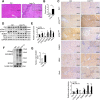

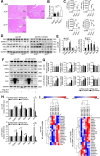
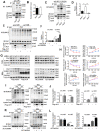
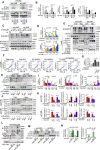
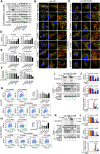
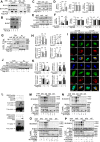
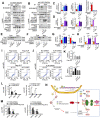
Similar articles
-
Alleviation of Ischemia-Reperfusion Injury in Liver Steatosis by Augmenter of Liver Regeneration Is Attributed to Antioxidation and Preservation of Mitochondria.Transplantation. 2017 Oct;101(10):2340-2348. doi: 10.1097/TP.0000000000001874. Transplantation. 2017. PMID: 28704337
-
Dephosphorylation by calcineurin regulates translocation of dynamin-related protein 1 to mitochondria in hepatic ischemia reperfusion induced hippocampus injury in young mice.Brain Res. 2019 May 15;1711:68-76. doi: 10.1016/j.brainres.2019.01.018. Epub 2019 Jan 16. Brain Res. 2019. PMID: 30659828
-
miR-199a-5p aggravates renal ischemia-reperfusion and transplant injury by targeting AKAP1 to disrupt mitochondrial dynamics.Am J Physiol Renal Physiol. 2024 Nov 1;327(5):F910-F929. doi: 10.1152/ajprenal.00409.2023. Epub 2024 Sep 12. Am J Physiol Renal Physiol. 2024. PMID: 39265082
-
SUMOylation targeting mitophagy in cardiovascular diseases.J Mol Med (Berl). 2022 Nov;100(11):1511-1538. doi: 10.1007/s00109-022-02258-4. Epub 2022 Sep 26. J Mol Med (Berl). 2022. PMID: 36163375 Review.
-
The role of Drp1 adaptor proteins MiD49 and MiD51 in mitochondrial fission: implications for human disease.Clin Sci (Lond). 2016 Nov 1;130(21):1861-74. doi: 10.1042/CS20160030. Clin Sci (Lond). 2016. PMID: 27660309 Review.
Cited by
-
New Insights in Mechanisms and Therapeutics for Short- and Long-Term Impacts of Hepatic Ischemia Reperfusion Injury Post Liver Transplantation.Int J Mol Sci. 2021 Jul 30;22(15):8210. doi: 10.3390/ijms22158210. Int J Mol Sci. 2021. PMID: 34360975 Free PMC article. Review.
-
CEND1 deficiency induces mitochondrial dysfunction and cognitive impairment in Alzheimer's disease.Cell Death Differ. 2022 Dec;29(12):2417-2428. doi: 10.1038/s41418-022-01027-7. Epub 2022 Jun 22. Cell Death Differ. 2022. PMID: 35732922 Free PMC article.
-
Current status and perspective on molecular targets and therapeutic intervention strategy in hepatic ischemia-reperfusion injury.Clin Mol Hepatol. 2024 Oct;30(4):585-619. doi: 10.3350/cmh.2024.0222. Epub 2024 Jul 1. Clin Mol Hepatol. 2024. PMID: 38946464 Free PMC article. Review.
-
LIGHT deficiency attenuates acute kidney disease development in an in vivo experimental renal ischemia and reperfusion injury model.Cell Death Discov. 2022 Sep 26;8(1):399. doi: 10.1038/s41420-022-01188-x. Cell Death Discov. 2022. PMID: 36163116 Free PMC article.
-
Novel Models for Assessing and Pathophysiology of Hepatic Ischemia-Reperfusion Injury Mechanisms.Medicina (Kaunas). 2024 Sep 15;60(9):1507. doi: 10.3390/medicina60091507. Medicina (Kaunas). 2024. PMID: 39336548 Free PMC article. Review.
References
-
- Huguet C, Addario-Chieco P, Gavelli A, Arrigo E, Harb J, Clement RR. Technique of hepatic vascular exclusion for extensive liver resection. Am J Surg. 1992;163:602–5. - PubMed
-
- Abdalla EK, Roger N, Jacques B. Hepatic vascular occlusion: which technique? Surg Clin North Am. 2004;84:563–85. - PubMed
-
- Selzner M, Rüdiger HA, Sindram D, Madden J, Clavien PA. Mechanisms of ischemic injury are different in the steatotic and normal rat liver. Hepatology. 2000;32:1280–8. - PubMed
-
- Odeh M. The role of reperfusion-induced injury in the pathogenesis of the crush syndrome. N. Engl J Med. 1991;324:1417–22. - PubMed
-
- Elias-Miró M, Jiménez-Castro MB, Rodés J, Peralta C. Current knowledge on oxidative stress in hepatic ischemia/reperfusion. Free Radic Res. 2013;47:555–68. - PubMed
Publication types
MeSH terms
Substances
Grants and funding
LinkOut - more resources
Full Text Sources
Molecular Biology Databases
Research Materials
Miscellaneous

